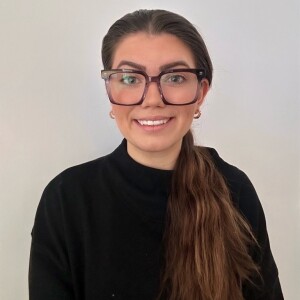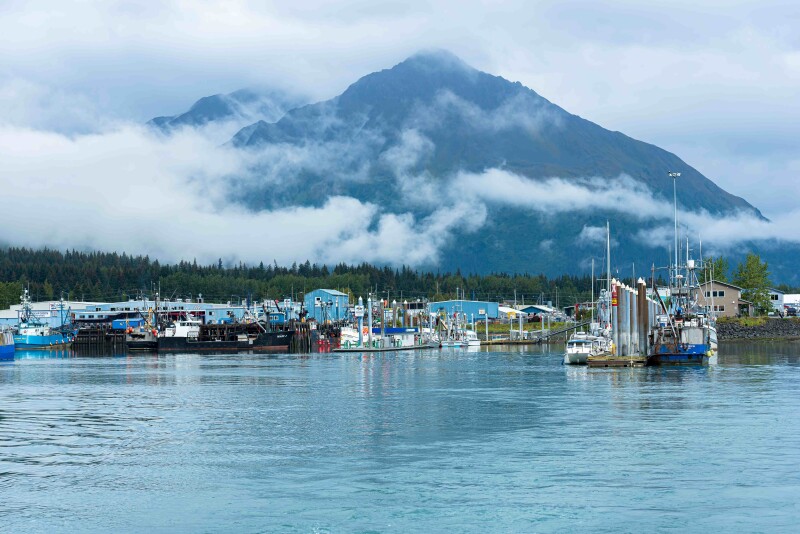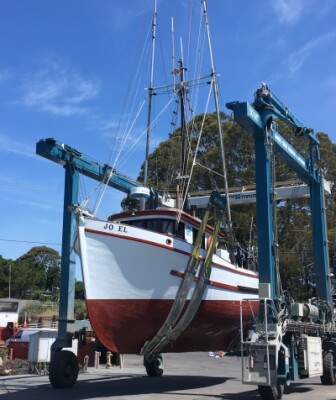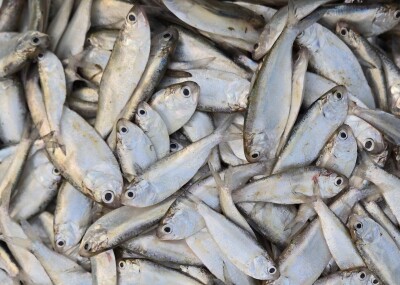At this year’s National Working Waterfront Network conference in February, a session on Alaska’s fisheries brought together a diverse panel of fishermen, policy experts, scientists, and community advocates. The panel described ongoing work in the Gulf of Alaska, co-led by NOAA Fisheries social scientist Marysia Szymkowiak and organizations in Sitka, Cordova, and Kodiak, to develop resilience plans focused on local fishing economies.
Their message was unified: Alaska’s fishing communities are at a tipping point. Regulatory pressures, climate change, and economic consolidation are making it harder to fish, and harder still to stay rooted in the coastal communities that have long relied on it.
One panelist, commercial fisherman Kinsey Brown from Cordova, who is currently working for the Prince William Sound Science Center, set the tone early. “This work is very close to my heart and my life, because I want our kids to be able to continue to do this.”
Brown emphasized that Alaska’s small-boat fleet had historically been resilient because of its diversity and adaptability, but recent changes are putting that at risk. “There’s not really just one big fishery that people can do to feed themselves and their families all year long.. That was the case in the 80s and 90s. Less so now.”
In Cordova, boats are smaller, and entry has traditionally been more accessible for younger fishermen. But Brown warned that even for the younger generation, access is slipping. “Yes, there are bigger boats, but there’s also the small boats used to catch things like Copper River salmon. That’s one fishery I see as a major strength of our community, that a lot of other working waterfronts would want to develop more.”
Barriers to entry came up repeatedly throughout the session, especially for rural Alaskans, tribal members, and young people trying to enter the industry. “What it means for resiliency,” Brown said, “is that a lot of small pieces make up living here/ make it possible to live here.” She described the importance of local ownership, direct marketing, and tools like permit banks and community quotes, but warned, “When access to fish leaves a town, the economic engine of that town leaves with it.”
The impacts of climate change only complicate matters. As water temperature rise and ocean ecosystems shift, salmon and crab populations are no longer returning to historical areas in predictable numbers. Multiple regions from the Yukon-Kuskokwim Delta to the Bering Sea have seen catastrophic collapses in key fisheries. These disasters aren’t hypothetical- they’re already happening.
“It’s not just about the bottom line, right? It’s not just about the livelihood,” said Theresa Peterson, a Kodiak resident and commercial longline fisherman, working for the Alaska Marine Conservation Council (AMCC). “It’s about that sort of full spectrum of well-being that is being affected by these changes. Fishermen are making more hazardous decisions. We’ve had boats going down, and we have huge mental health crises in our communities.”
Despite the hardships, the session wasn’t just about outlining problems; it was also about exploring solutions already underway.
In Kodiak, project partners (NOAA, AOOS, and AMCC) launched a four-part public radio series to broaden community engagement through conversations between local fishermen and scientists about change. “Everybody listens to Public Radio,” Peterson shared. “We put together a four-part radio series. It was kind of a story-sharing event in the community. I think it built really beautiful conversations but also opened up doors.” The radio series was also developed in Sitka and is currently being recorded for Cordova, available here: https://aoan.aoos.org/coastal-climate-radio-series/.
The panel explained collaborative workshops that have been held in different communities in the state. They have sparked visioning and vulnerability assessments. “We started to develop the massive vulnerability assessment. It was a good learning experience, and just in December, we had our first visioning workshop,” shared (I believe the moderator)
She emphasized how critical it is to involve the full spectrum of the community. “We had kids who are just in college and even high school. And then we had older folks who have been in the community for a long time. Fishermen also shared their thoughts about what they want this place that they love to look like in 25 years.”
One theme that carried throughout the discussion was the disconnect between federal- and state-level decision-makers and the lived experience of people on the ground. “Too often, communities are consulted only after a rule is drafted,” Natalie Sattler, communications and program coordinator for Alaska Sustainable Fisheries Trust, noted. “By then, it’s too late.”
Panelists highlighted the need for stronger community participation in fisheries governance, including Tribal-led initiatives and co-management. In Kodiak, Peterson shared how coordination between Tribal leaders, borough planners, and fishermen was long overdue. “I had never stepped foot in the borough’s property... Nor had the gentleman who oversaw that ever been down on the docks... We were like, oh man, we need to be talking to each other more.”
In Cordova, Brown described how her community is actively redefining adaptation from the bottom up. “Adaptations aren’t some new thing... We’ve been adapting for a long time... It could be something as simple as changing where you’re fishing.”
She illustrated this with a story of using glacier ice in place of processor-supplied ice — a practical solution to infrastructure gaps. “We didn’t have any ice, so we just went to our local glacier that falls into the water, and we grabbed this big iceberg. That’s an example of adaptation.”
Brown also stressed the importance of honoring fishermen’s time and insights. “One thing I’m really happy that this project had was funds to bring fishermen in and pay them for their time. We were able to give fishermen an honorarium to be able to come.”
Indeed, the idea of self-determination — of communities defining their own future — was a thread that tied the session together. While there are many challenges, there are also examples of resilience: collaborative planning efforts, localized science, and community-owned infrastructure.
“We’re not going anywhere,” Peterson said. “We have tremendous assets in these communities. What makes these communities unique is how bound their social networks are.”
The session concluded with a sense of urgency, but also with hope. Alaska’s working waterfronts may be under pressure, but they are far from giving up. “There’s lots to do,” said Sattler, “but I feel like there’s a lot of momentum behind it and a lot of good energy.”
The message from the panel was clear: with the right tools, the right voices at the table, and a commitment to long-term thinking, Alaska’s fishing towns can chart a future that’s both sustainable and just.
To learn more about this work and the pathways forward that these communities are developing for resilience, see: https://fap.aoos.org/







